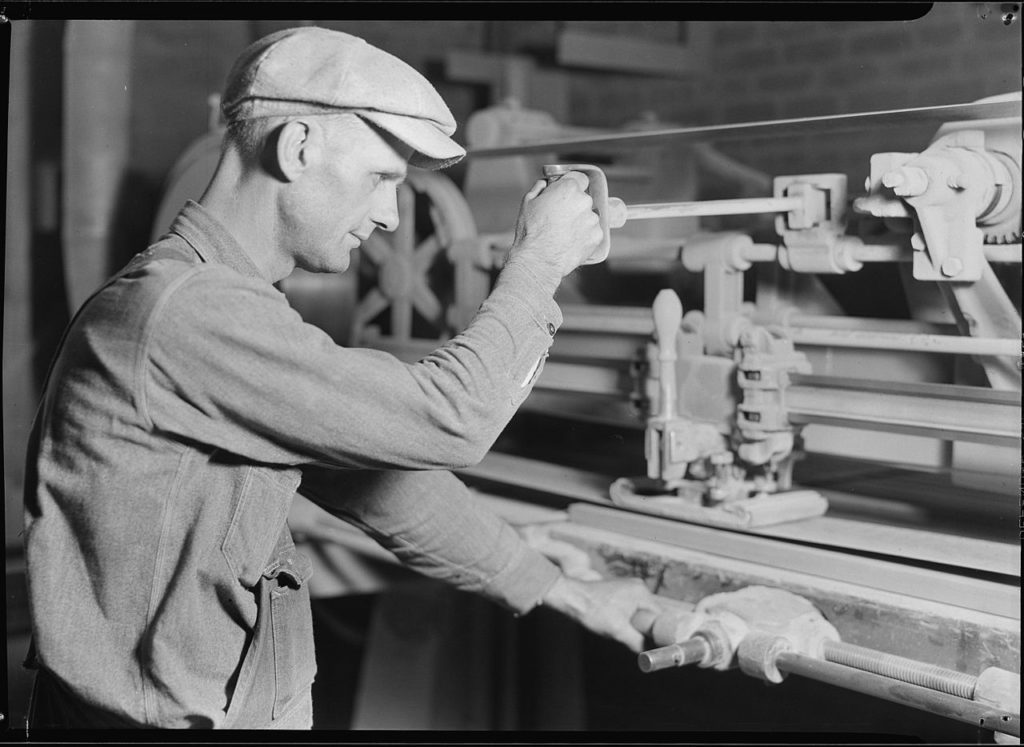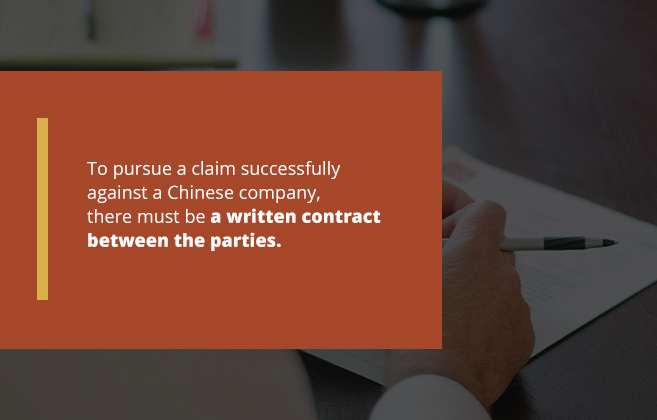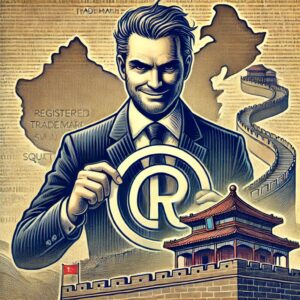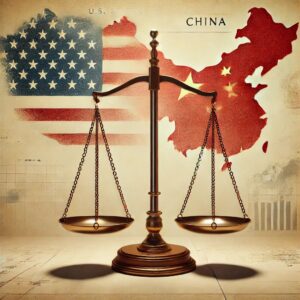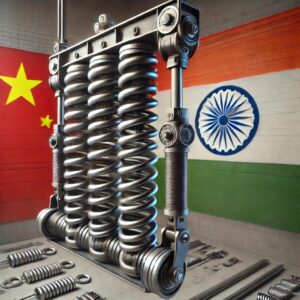China Manufacturing 101
The phrase “May you live in interesting times” is often – and incorrectly – described as a Chinese “curse”. Although there is in fact no equivalent Chinese phrase, for companies manufacturing in China, these are interesting times indeed.
This very long post aims to provide an overview of the challenges of manufacturing in China, as well as strategies for minimizing risks and maximizing opportunities. It outlines the administrative and regulatory requirements, process and production challenges, and specific cultural and market-specific risks.
I am writing this post after fielding dozens of requests over the years to “put together in one place ALL of the basics necessary to manufacture in China successfully.” In this post, I’ve tried to include everything that is relevant close to 90 percent of the time, while not bogging you down with the things that happen ten percent of the time, or less.
Every business and company is different, however, and the information and advice offered here is intended to alert business managers to the legal considerations specific to the China manufacturing environment; it is not intended to serve as a replacement for bespoke legal advice. You may be the company that actually needs legal help with what I describe above as things that happen ten percent of the time, or less.
But no matter what your situation, I urge you to reach out to us if you’d like to discuss your specific circumstances or feel you need some help in protecting your company against your China manufacturers.
China Manufacturing Challenges
Manufacturing in a foreign country can offer significant benefits – especially in terms of cost – but when the mountains are high and the emperor (that’s you, the client) is far away (山高皇帝远), problems can arise. The best way to reduce the likelihood of having problems with your China product suppliers is to recognize that most China manufacturing problems stem from something the product buyer failed to do to prevent the problem. In other words, it is mostly up to you to reduce your risks.
But what exactly should you do to protect yourself when manufacturing overseas? Start with these six basic measures:
1. Use a Good Manufacturer
If you do not know how to find a good manufacturer, pay someone who does. At the very minimum, make sure the company you will be using to make your products actually exists and is licensed to engage in the business for which you will be paying it. If you cannot afford to do these things, you should not be manufacturing overseas. Not kidding.
2. Use Good Manufacturing Agreements
Good contracts ensure that your China manufacturer knows what is required of it and what will happen to it if it does not meet those requirements. More than half of the overseas manufacturing contracts our international manufacturing lawyers see are worthless because they were written by someone who either does not know manufacturing or does not know international law, or both. Many are worse than using no contract at all.
3. Use Detailed Contracts
Overseas factories that engage in contract manufacturing tend to do exactly what you tell them to do. This means you need to clearly convey what it is that you want them to do, and that means your instructions and specifications should be detailed and in their language. Be overly specific.
4. Visit the Factory
Either your own people or a third-party quality control company should pay regular visits to your factory. Doing this allows you to make sure your factory understands what you want and lets them know that you are serious about making sure you get it. It also humanizes you and tells them that you really do care and are not just putting things down on paper to look good to your own buyers or to abide by some regulation somewhere.
5. Inspect Your Products
Perform regular product inspections appropriate to the product you are having made.
6. Register Your Intellectual Property
If you have intellectual property (IP) worth protecting (and nearly every manufacturer does), make sure you do everything you can within reason to protect it wherever you are manufacturing your products and wherever you sell your products. This means trademarks, patents and/or copyrights.
Intellectual Property Rights Protections
Register Trademarks in China
The Chinese trademark system is complicated: idiosyncratic, highly regimented, and overseen by capricious examiners.
So why not register China trademarks via the Madrid System for the International Registration of Marks?
The one-size-fits-all Madrid application makes registering a trademark in China seem easy. Really easy: all you have to do is check a box marked “China.” As a result, Madrid applicants are lulled into a sense of complacency, but all too often the result is a rejection that could have been avoided with a national application in China. Madrid applications are supposed to be cheap and quick, but fixing Madrid problems after the fact is neither.
Trademark prosecution in China is highly mechanical; for the vast majority of applications, you file an application, wait 18 months, and at the end of that time your trademark is either registered or rejected. (A slight oversimplification, but not by much.) For this reason, the meaningful work for Chinese trademark applications occurs before the application is filed.
First of all, it is essential to conduct a pre-application trademark clearance (a.k.a. a trademark screening) to assess the trademark’s registrability. Is the mark inherently distinctive? Does it run afoul of China’s statutory prohibitions on trademarks? Does it conflict with any preexisting trademarks?
Next, assuming the screening results don’t scare you away, you must determine which class(es) to file in and the specific products or services (“items”) to be covered by the mark. This is a lot trickier than it sounds because the Chinese Trademark Office (CTMO) divides each Nice classification into a unique system of subclasses. For purposes of trademark registration, each subclass is treated discretely: a trademark for one item in a given subclass covers all items in that subclass, but is not effective on items in any other subclass.
When you file a China national application, you determine the subclasses that you want your application to cover. But when you file a Madrid application, your list of items goes straight to a CTMO trademark examiner, who will decide from your list which subclasses the items should go in without consulting you. This lack of consultation, combined with the examiners’ often-tenuous grasp of English (or French or Spanish), means that imprecise descriptions of items can lead to problems of both overinclusiveness and underinclusiveness.
It is possible to perform a pre-application screening before filing a Madrid application, and it is possible to craft a description of items in a Madrid application that will conform to the Chinese subclass system. But this requires working with an experienced China trademark attorney or agent, and it will cost nearly as much and take nearly as much time as a national application. In other words, you lose all of the advantages of the Madrid System, but keep all of the disadvantages.
Finally, even if your Madrid System trademark is registered in China without a hitch, you may still have trouble enforcing your rights. Upon registration, the only formal certificate for Madrid System trademarks is the one issued by WIPO. China does not issue its own separate trademark certificate. In theory, this should not be a problem, because the WIPO certificate should be sufficient to enforce your trademark rights under Chinese law. In practice, Chinese bureaucrats and e-commerce customer service reps generally could care less about China’s WTO obligations. Much of the time, before they will lift a finger against an infringing factory or website, they will demand a copy of a CTMO-issued Chinese trademark certificate. It is easy enough to request a Chinese trademark certificate based on a WIPO registration, but it takes another three to five months to get one. That can feel like an eternity when your trademark is being knocked off.
Learn About Our Risk Assessment Packages
Register Design Patents in China
A design patent in China is generally analogous to a design patent in the U.S. or a Community design in the EU and it covers novel product designs that (1) incorporate shapes, patterns, and/or colors, (2) are rich in aesthetic appeal, and (3) are fit for industrial application. China registers design patents without conducting a substantive examination of the design patent application and so it does not take much at all to secure one. Substantive examinations only occur if a third party challenges a patent’s validity after registration. A design patent applicant need only submit an application to SIPO that satisfies the procedural requirements, particularly with respect to proper formatting of documents and drawings.
As a result, in many circumstances companies must register a design patent on their product(s). If they don’t, someone else will and then they find themselves having to challenge that patent in China (which is relatively expensive and time-consuming) or just walking away from China.
Even though many of the design patents in China are nothing more than slight modifications of existing product designs, they still can have substantial value because their owners can sue for patent infringement and register the patent(s) with China Customs and have counterfeit or copycat products seized at the border. Even if you do not think your design is novel enough to be patented, there is a first-mover advantage to your filing for a China design patent simply because your design patent will be valid until successfully challenged by a third party. A Chinese design patent grants its holder exclusive use of the aesthetic features of a product, not its functioning portion. In other words, the patent is on how the product looks; its external appearance.
What though, does it really mean to have a China design patent?
A typical design patent case starts with a phone call from a Western company telling us a Chinese company (usually a company it already knows and usually either its manufacturer or a competitor) just contacted the Western company (or the Chinese company that makes the Western company’s product) and said the Western company’s product violates the Chinese company’s China design patent. The Chinese company then threatens to sue the Western company (and/or its Chinese manufacturer) for patent infringement damages and to block any of the Western company’s “infringing” product from leaving China.
Though China Customs frequently blocks products from leaving China due to trademark infringement claims, blocking products due to a design patent claim is considerably less common. China Customs generally requires a party seeking to block a product from leaving China to post a substantial bond, which then becomes available to the party whose product has been blocked by customs. Many more companies are willing to bear this risk to stop trademark infringing products from leaving China than are willing to take this risk for a design patent claim.
What’s the best way to nip design patent hijacking? Register your design patent first, before anyone else can do so. If you want to be sure to avoid your products being held up at the Chinese border on an IP claim, you should secure both a trademark and a design patent.
Registering your IP with China Customs
China Customs will block products that infringe on China IP from entering or leaving China. The “leaving China” part is why it is 100% essential that you register your IP in China even if all you are doing in China is having your products made there. The leaving China part is also why it usually makes sense for foreign companies that have registered their IP in China to also register that IP with China Customs.
Even though manufacturing in China is on the decline, China still manufactures way more than any other country in the world and it is still by far the world center for product counterfeiting. If you register your IP in China, then also register that IP with China Customs, you will have positioned yourself to be able to block counterfeit versions of your products from leaving China for anywhere in the world.
Should You Register Your Copyrights in China?
Copyrights are automatically protected in China under the Berne Convention, but to be able to sue quickly for a copyright violation and to have full copyright protection in China, it almost always makes sense to file your copyrights there. Just as in the United States and the E.U., you need only submit a small portion of your software code to secure copyright protection on the entire program.
China NNN Agreements
We love NNN Agreements for China. They are fast, cheap, easy, telling and effective.
If in the course of conducting business in China, you are going to reveal anything (e.g. to partners, suppliers) that you do not want made public, you should consider an NNN Agreement. If you are going to be showing your products, prototypes or designs to a Chinese factory, you should consider an NNN Agreement. If you do not want your Chinese manufacturer competing against you with your products, you should consider an NNN.
But the most important thing you need to know about China NNN Agreements is that they really should not be an NDA; they should be China-specific NNN Agreements, because Western-style NDA agreements do not work for China, and most of the time, using one is worse than having no protection at all.
NDA agreements prohibit your Chinese counterparty from disclosing your secrets. They do not stop them from competing against you or going behind your back to your customers or clients or to anyone else. To prevent these behaviors, you need a China NNN (non-use, non-disclosure and non-circumvention) Agreement.
1. Non-Use
Non-use requires your factory to agree not to make use of your idea/concept/product in a manner competitive with you, the disclosing party. The critical point is that this obligation arises by contract. This protection is not based on abstract property rights arising under intellectual property law. The prohibition protects you not because your concept is classified as some form of intellectual property such as a trademark, copyright, patent, mask work or even a trade secret. The factory is prohibited from using your work because it executed a contract that prohibits it from using your work. Getting a factory to sign a contract with a non-use provision means there is no need to look outside that contract to other areas of law for you (and China’s courts) to be able to control the behavior of the Chinese factory.
2. Non-Disclosure
The next element of an NNN Agreement is non-disclosure. This is the core of an NDA, or Non-Disclosure Agreement. Surprisingly enough, you need not be terribly concerned with having your Chinese counterparty disclose the information you want kept secret to an unrelated third party. This is because Chinese companies usually have no interest in letting others in on their good thing. If they want to use your concept, they want to use it for their own purposes, not to disclose it to others.
But if you prohibit a Chinese factory from making direct use of your concept, the Chinese factory now has a problem. The clever Chinese entity will not directly breach your non-use prohibition; it will simply disclose your information to someone in its corporate group, then accurately claim it has not breached the non-use prohibition because it is not the one making use of your protected information.
For this reason, it is important you understand the type of group with which you are dealing, and you must make clear in your NNN Agreement that disclosure is specifically prohibited within the group, and that if there is any infringement by any member of the group, the factory that signed your NNN Agreement and made the disclosure is fully liable. Often, some education of your Chinese counterparty on this issue is required, because Chinese companies often do not consider disclosure to a member of their own group as violating a non-disclosure prohibition.
3. Non-Circumvention
Finally, you need to deal with non-circumvention. The Chinese factory knows you are purchasing the product at the China price, then adding a margin and selling it at a profit in the foreign market. In this situation, it is only natural for the Chinese factory to work to obtain a list of your customers to whom they can sell your product at the China price. After going through your customer list, they start marketing “your” product to the rest of the world. What would your customers do if offered your product for 50% less? In many industries (especially those where quality and servicing is critical), most customers would say no. But in many other industries — including consumer products — they quickly and almost uniformly say yes.
Note also that if you have not registered your brand name and/or logo as your own trademark in China, there is nothing to stop your Chinese manufacturer from putting “your” brand name and/or logo on these very same products and selling them into any country where you do not have a corresponding trademark.
This is circumvention, and you must prohibit circumvention by contract. There is no other way to do it. A good NNN agreement is your only protection.
Finally, we always do our China NNN Agreements in both English and Chinese. We make the Chinese version the official one, and the English version just a translation for our English-speaking clients. Making them in Chinese means that the Chinese courts will be able to better understand them and enforce them more quickly. It also takes away the other side’s argument that it did not know what it was signing.
Writing a Manufacturing Contract
A manufacturing contract with your Chinese manufacturer should, among other things, give your manufacturer precise instructions for manufacturing your customised product. It should give them the specifications for your product, the materials it should use in making your product, the packaging and the wrapping they (or their subcontractor) should use to cover and even ship your product. Most importantly, it should protect you from your manufacturer by setting forth what the manfacturer cannot do and what happens if it does any of those things. Just by way of a few examples, it should provide that your manufacturer cannot send you defective product, make late deliveries of your product, make your product for anyone else, or steal your IP.
Some of the important considerations, issues and questions to consider when drafting a China manufacturing agreement:
- Decide if the agreement with your manufacturers will be exclusive or nonexclusive.
- Decide the manufacturers’ obligations to sell. There are basically two alternatives.
- The manufacturers are obligated to produce product under any purchase order you submit and their failure to produce at the agreed price would be a default. You would then almost certainly be required to purchase a minimum amount of product during a specified time period. This approach is best if you want to guarantee supply and you want to hold your manufacturers to their price commitments.
- Or, obligate your manufacturers to produce product only for those purchase orders it accepts. In other words, they will have the right not to accept purchase orders, at their discretion. The advantage of this to you is that it will not require you to purchase any specific amount of product. The disadvantage is that there is no guarantee of supply and there is no way to hold your manufacturers to any price commitment.
- Decide whether or not you want to identify specific ports of delivery. If you will have multiple ports and delivery locations in some of the countries where you will be receiving your product, the port/delivery location should be specified in the purchase orders rather than the manufacturing agreements.
- Decide on payment terms, e.g. payment 30 days after shipment, or 30 days after inspection. If you will provide for payment 30 days after shipment, you will need to determine when you will inspect the product. It is best to have inspection before payment, but this is not always practical.
- Decide on a warranty period.
- Decide on trade secrets/IP protection provisions, e.g. a monetary penalty for breach that might be both a lump sum penalty and a percentage of sales penalty. These penalties should be large enough to cause concern for the manufacturer, but not so large as to scare them into not signing.
- Decide on tooling provisions that may provide for a series of lump sum penalties. Manufacturers commonly refuse to return tooling and the most effective way to control this is to provide for a significant lump sum penalty for such a refusal.
Additional considerations in drafting a manufacturing contract include:
Product Testing: Where and how will you test your product? Will you do you own independent testing in China or will you wait until you receive the product in your home country? Will you require the Chinese factory to test and then provide you with test results? If you will do your own independent testing in China, it is important to set out the testing procedure in writing.
Manufacturing Set-up Costs:Your factory may ask you to pay in advance for some of the manufacturing set-up costs. Though this is normal, it is important to clarify those costs and then get them in writing.
Product Pricing: You will want to lock in your costs, especially in consideration of your factory’s understandable desire to be protected from increases in the costs of materials. The normal way pricing is done for this kind of item in China is as follows:
- The product price is fixed for a set period, say, one year. The Chinese manufacturer takes the price risk during this time, both for changes in component prices and for RMB/USD exchange rate risk.
- It is easiest if the manufacturer builds in the cost of items from the approved suppliers and takes the risk of price changes. Often a manufacturer will calculate that amount at cost+ to cover the risk and to cover the costs of advance purchasing and warehousing.
If your manufacturer is not willing to do the above, the quoted product price from them is not really a fixed price and it can change over time. The risk in this situation depends on the integrity and reputation of the manufacturer. Some Chinese manufacturers will double or triple their prices after production has started and after you are trapped into using them as your manufacturer. Reputable manufacturers typically will only raise their prices when there has actually been a material change in component prices.
Product Packaging Costs: It should be made clear who has responsibility for packaging design, production, and payment. It should also be made clear how packaging costs will be included in the final cost of the product. It is important to get these costs agreed and in writing.
Manufacturing Contract Duration: What will be the term of this agreement?
The Three Main Types of Manufacturing Contracts
Most manufacturing contracts involve one of three different types of manufacturing arrangements: Original Equipment Manufacturing (OEM), Contract Manufacturing (CM), and Original Design Manufacturing (ODM). These three different arrangements influence various legal issues inherent to overseas manufacturing.
1. Original Equipment Manufacturing (OEM)
In this arrangement, the buyer purchases from a factory a product that is already being manufactured by that factory. The product buyer then “packages” this product with its own trademark and logo. The buyer and the factory may agree to certain cosmetic changes (color, shape, minor added features) that further customize the product for the buyer.
In an OEM arrangement, the intellectual property (IP) rights are usually clear: the buyer owns its branding (trademarks, logos and packaging) and the factory owns the product. Difficulty arises once the product is customized. Who owns the IP once the buyer has made changes to the product? An OEM agreement can provide clarity here. Usually, the buyer seeks to restrict the factory from using the customization in selling the base product to third parties.
2. Contract Manufacturing (CM)
With contract manufacturing in China, the buyer has a fully developed product design. Traditionally, this design was of a product that had been previously manufactured by the buyer. More recently, the product is a new design being manufactured for the first time overseas. In a CM arrangement, ownership may seem simple: the foreign buyer owns all the IP, both in design and branding, and the factory owns nothing. In practice, however, the division is not always so clear. For example, your factory may change your product’s design and use those design changes to modify its own products it sells in direct competition with your products. Difficulties exist in every contract manufacturing project, and they can be resolved with a clear, written agreement.
3. Original Design Manufacturing (ODM)
As external manufacturers are becoming more technically competent, foreign buyers have started entering into arrangements in which their overseas factories do some or all the product design work. There are many variations on this approach. In its most fundamental form, the foreign buyer provides drawings and a specification sheet, and the overseas factory does the rest of the work in consultation with the buyer.
In an ODM arrangement, the obvious question is: who owns the design of the product? Both the foreign buyer and its overseas factory may claim ownership of the design using conflicting arguments. The overseas factory will agree to make the product on an exclusive basis for the foreign buyer, but the foreign buyer does not have the right to have the product made by a third-party factory. This position can come as a bad surprise to the foreign buyer, particularly when its overseas factory suddenly announces it will be doubling the price for manufacturing the product.
These issues can get even more complex when the product incorporates or is based on technology clearly owned by the overseas factory. In this context, the factory will often state that the buyer can go anywhere it wants to manufacture the buyer’s own portion of the product design, but no third-party factory can make use of the factory’s proprietary technology in the manufacturing process. Consider this case for a foreign buyer that has spent considerable time and effort to develop a product design only to learn after a year that its overseas factory has decided to terminate the manufacturing agreement.
There is no simple default answer to these difficult issues; the only way to resolve them is to draft a detailed written ODM agreement in advance, setting out a path to resolution that is fair to both sides. The legal default in most countries will favor the position of the factory. Absent a clear agreement on how to proceed, the foreign buyer will lose pretty much every time.
China Product Development Agreements
Foreign companies that outsource their product manufacturing to China often co-develop their products with Chinese manufacturers. In some cases, the foreign company has completed its product development and the Chinese manufacturer’s only involvement is in setting up to manufacture the product in high volumes. In other cases, the foreign company side has only a general product “idea” and the Chinese manufacturer is tasked with turning the foreign company’s napkin scribblings into a viable commercial product. Sometimes both the Chinese manufacturer and the foreign company contribute technology and know-how so the final product is a blend of both parties’ contributions.
The product development stage is the highest risk stage for foreign companies manufacturing in China, yet it is also the stage most neglected by foreign companies. Foreign companies will use NNN agreements in the factory search stage and they will use OEM agreements for the production stage, but they rarely use product development agreements.
This is a big mistake that often leads to one of two disasters for the foreign company.
The first disaster can occur when the Chinese manufacturer does not charge the foreign company anything for the product development work. In these situations, the Chinese manufacturer often will claim that any intellectual property in the developed product is its own and will generously offer to make the product on behalf of the foreign company at price, payment, quantity, quality and delivery terms chosen by the Chinese manufacturer. No matter how outrageous the pricing or other demands from the Chinese manufacturer, there is little the foreign company can do because it waited until development was finished before even considering who would end up with “its” IP.
The second disaster stems from foreign companies not considering the procedural issues necessary for successfully developing a product. Foreign companies far too often mistakenly assume that Chinese manufacturers can develop any product within the tight timeframes and close tolerances required by modern business. This often leads to the following:
- The product is never completed or never works properly.
- The product is not completed until after the market opportunity has passed.
- The product cost ends up being far higher than projected.
The only good way to address the above product development risks is with a product development agreement enforceable in China. A good product development agreement covers the period between the NNN agreement stage when you are figuring out which Chinese manufacturer to use and the OEM agreement stage when you have already selected your Chinese manufacturer and know exactly what you will have manufactured.
A good product development agreement generally includes provisions addressing the following:
- The product to be developed.
- The technologies the foreign company and the Chinese manufacturer will contribute.
- Who will provide the product specifications and in what form.
- Who will own the IP rights to the resulting product.
- Who will pay for product development costs?
- Who will pay for the molds and tooling?
- Setting of milestones. Chinese manufacturers often agree to do the development work, but fail to do so in a timely manner. Your product development agreement should provide incentives for your Chinese manufacturer to meet milestones and a penalty if it does not.
Chinese manufacturers usually prefer to cover all of the costs of product development because they want to own the resulting product and foreign companies far too often go along with this, without realizing this likely means the Chinese manufacturer will end up with the product and its related IP.
China Manufacturing Risk Management
A China Manufacturing Compliance Checklist
If you have familiarized yourself with the applicable Chinese laws and your business has done its utmost to comply with those laws, the odds of your company getting into legal hot water in China are low. We have helped countless foreign companies deal with China compliance failures, and very rarely have we concluded that our client was singled out for no good reason. Even when our client had done nothing wrong, we could still understand why the Chinese government had initially thought otherwise.
On top of this, the foreign companies we represent have become much savvier in realizing the need to remain in compliance. It has truly been years since any of our clients have excused their non-compliance by claiming “everyone is doing it.” And yet we still get plenty of calls from companies that make this excuse after they have been caught operating illegally. Guess what — in China like pretty much everywhere else in the world — this is no excuse.
But what exactly should you be doing now to ensure you are in compliance with Chinese laws?
Corporate Compliance
Are your company’s activities still covered by the scope of business used during its registration? If you registered as an import/export company and you now own a factory, you should make some changes. Is your business in a different location from what is listed on your business license? That requires a change also. Is the person listed as your company’s legal representative still with your company and still the person you want in this position? What about the general manager? The supervisor? Have there been any changes to the parent company?
China Employment Compliance
China’s employment laws are complicated, localized, and pro-employee. Make sure you have appropriate written employment agreements with all of your employees in China, domestic and foreign. Review and update your employee manual (a.k.a. Employer Rules and Regulations). Review and update all other employment-related documents, from offer letters to severance agreements and everything in between. Make sure you otherwise stay in compliance: are all of your non-Chinese employees’ work permits and residence permits up-to-date? Have you secured approval from the local labor bureau for any employees under a non-standard working hours system? Have you secured all necessary renewals for such employees? Are you paying into the appropriate social insurance accounts for each employee?
China Tax Compliance
It is sometimes necessary to engage a competent local accounting firm. Your accountants must of course understand Chinese tax law, but they should also have at least a rudimentary understanding of your home country’s tax laws as well. For instance: make sure your transfer pricing is current and accurately reflected in your contracts and that your profit margins are high enough to keep China’s tax authorities at bay.
China IP Compliance
We frequently get calls from foreign companies doing business in China that have let their China IP registrations fall into disorder (or never organized their IP in the first place). Most of the time, it is my law firm’s China IP lawyers who spot the problem. Even if you registered everything appropriately when you first came to China, have you kept up with newer products/services or brands? Are you registering design patents before you release your products? Are you keeping sufficient evidence of trademark use to fend off a non-use cancellation? Have you properly drafted and registered any trademark license agreements? Are you taking full advantage of China’s trademark system to protect your brand name, slogans and logos?
China Contract Compliance
Many foreign companies do business in China in a way that makes it all but impossible for them to enforce their contractual rights. Do you have written agreements with all your major sources and clients? Are you using a lawyer to draft your design/manufacturing/licensing/purchase/etc. agreements? Are these agreements in Chinese? Enforced under Chinese law?
Spend the time now on the above to avoid having to spend a lot more time later.
Should You Register Your Copyrights in China?
Copyrights are automatically protected in China under the Berne Convention, but to be able to sue quickly for a copyright violation and to have full copyright protection in China, it almost always makes sense to file your copyrights there. Just as in the United States and the E.U., you need only submit a small portion of your software code to secure copyright protection on the entire program.
What About Insurance?
Chinese Manufacturer Product Insurance Has Its Own Special Risks
When sourcing products from Chinese factories, foreign product buyers often assume they can require their manufacturer to carry insurance that will cover any defects or injuries caused by the product. However, the reality is that relying on Chinese suppliers for adequate insurance rarely provides real protection. Chinese policies often have limitations or exclusions that prevent Western companies from collecting claims. This post explains why foreign companies should consider securing their own comprehensive product liability coverage rather than trust their Chinese partners.
Real-world Scenarios: Behind the China Product Insurance Curtain
A startling number of Chinese manufacturers operate without adequate insurance for the products they make and sell worldwide. Additionally, our China lawyers have seen many instances where Chinese manufacturers agreed to purchase insurance but never did, even going so far as to provide fake insurance certificates
Now just for the fun of it, assume that your Chinese manufacturer is one of the few that actually does invest in insurance, the odds of you as a foreign company being able to collect against that policy are just not good. Not only that, but your Chinese supplier’s increased costs from that policy will no doubt be reflected in what it charges you.
The Safer Bet: Get Your Own Insurance
Our advice to our clients is that it will usually be easier/cheaper/safer for them to secure its own insurance, rather than relying on their Chinese counterpart. Why pay someone else (through increased product pricing) to buy Chinese insurance that you probably can never be certain exists and will be difficult if not impossible to collect against instead of just securing and paying for the insurance yourself?
Companies that buy products from China will usually be better off purchasing their own product insurance than relying on their suppliers. Your best protection will usually be achieved by using an insurance broker who understands your industry to secure a policy that specifically covers your products and risks. Though requiring your Chinese manufacturer to secure its own insurance may seem like an easy solution, getting your own tailored product liability coverage will usually be a better bet.
Protecting Yourself from Scammers
What can you do to help prevent China factory problems? The quick answer is to know your factory before you contract with them and especially before you send them any money. The way to know your factory is to do due diligence on them. The bare minimum due diligence on your potential China manufacturing partner should include the following:
- Obtain the Chinese manufacturer’s actual Chinese company name. This can then be verified by comparing it with the company’s business license.
- Check with the official Chinese government registry to see if your Chinese manufacturer has actually been registered as a Chinese company.
- Check your Chinese manufacturer’s capitalization to see if it is sufficiently large enough and well-funded enough to handle your proposed deal.
- Check the Chinese company’s corporate officers and shareholders to see if they have any conflicts of interest by owning other companies. This is quite common and often explains why they are insisting on you using certain sub-suppliers.
- Check the Chinese company’s current operational status: Open, Irregular Operations, or Revoked. We have found that clients’ potential Chinese business partners had been placed on the “irregular operations” list by their districts’ Market Supervision and Administration Bureaus. The reasons for a company being flagged as such are often because of financial difficulties and mismanagement. You do not want to do business with such a company, because the consequences of a company being flagged as having abnormal operations include:
- Banking accounts and activities restricted or frozen.
- Services and licensing provided by government bureaus restricted or prohibited.
- Administrative penalties imposed. For example, a failure to notify the Bureau of a change in registered address carries a fine of RMB 10,000 to 100,000.
- The individuals in charge of the company restricted. Additionally, if the company has been flagged for three years, it will be placed on the list of companies that have seriously violated the law.
We are seeing many more Chinese manufacturers on the irregular operations list than previously. Worse than that, we are also seeing more Chinese manufacturers showing up on the “operations revoked” list.
- Make sure the Chinese government has authorized your Chinese manufacturer (per its business scope) to do the type of business it is proposing to do with you. Companies in China must specify their intended business scope in their articles of association, and this scope is subject to approval by the government registration authorities and if a Chinese company exceeds its scope, it is operating illegally.
- Check the history of the Chinese manufacturer with which you might do business. Most fake companies do not bother to create a business history. If a company does not have a history you can verify, you should seriously consider walking away.
- Find out what property and IP your Chinese manufacturer owns. Companies that own property and/or IP are much less likely to scam you than those that don’t.
- Check your Chinese manufacturer’s litigation history and whether and how often it has been in trouble with the government. A company that is constantly getting fined by the government and/or constantly getting sued by its product buyers is not a good company with which to do business.
- Have a good and China-specific manufacturing contract with your Chinese manufacturers. If the Chinese company formally declares bankruptcy (which does happen) and if it has some assets left (which also does happen) and if you have a China-centric manufacturing contract you at least have a chance at getting some or all of your money back.
- Pay as little as possible until your product has arrived and been quality-checked. One of the best things you can do to reduce your China product buying risks is to delay all or almost all payment until after you have confirmed delivery of conforming product. But few Chinese manufacturers will agree to this, and even fewer Chinese manufacturers that intend to scam you will do so.
- Use common sense. If a manufacturer seems too good to be true, it probably is not. Red flags:
- Insanely good proposed pricing
- Unrealistic promised delivery times
- Few questions to you about the details of the work
- Unresponsive to your questions to them
Your Manufacturer Is Your Likeliest Competitor
In deciding to manufacture in China, you will essentially be educating your Chinese manufacturer in how to compete with you. And guess what? It is perfectly legal for your Chinese factory to copy your products unless you have a contract forbidding that. It is also perfectly legal for them to use your brand name in China (or even to register your brand name as its own trademark) if you have not registered your brand name as a China trademark.
Years ago, it was common to do business in China without a contract. Before China had modern trade laws and courts that were able to handle business disputes, this informal approach made sense because there was no alternative.
To pursue a claim successfully against a Chinese company, there must be a written contract between the parties, executed by both parties in accordance with the Chinese law requirements. Unlike in the U.S. or the E.U., Chinese courts rarely allow for proving the existence of a contract by putting together pieces evidenced by scattered POs, invoices, emails and desperate phone calls. The court will insist on a written agreement that unambiguously names the parties and provides the basis for the agreement.
Additionally, the contract must be enforceable in China. As a practical matter, Chinese courts incredibly rarely enforce foreign judgments, and it can be quite difficult to get them to enforce a foreign arbitration award. A contract enforceable in China must meet the following basic standards:
- The contract is governed by Chinese law. Under Chinese law, it is permissible to provide that the contract be governed by foreign law. However, providing for foreign law all but guarantees failure in a Chinese court because Chinese courts require the party to prove every relevant element of foreign law. This is a disaster for several reasons. First, proving foreign law is expensive. Second, proving foreign law leads to delay. Third, skillful defendants will dispute the application of foreign law, rendering your case and even any judgment you receive uncertain.
- The governing language of the contract is Chinese. Under Chinese law, it is permissible to provide that the governing language of the contract is a foreign language such as English. To do so, however, nearly always leads to disaster. Chinese courts will only work with Chinese-language documents.This means the contract must be translated into Chinese. The translation will not be done by the parties but rather by a court-appointed translator. The translator is often not particularly skilled, and the resulting translation is often simply wrong. Even when the translation is correct, the defendant will often dispute the translation, leading to delays and ultimate uncertainty in the decision. Having someone else translate your contract after you sue means that you do not even know exactly what it is on which you are suing. We are also aware of Chinese courts simply refusing to hear cases that involve contracts in a language other than Chinese.
- The contract should be enforceable in a Chinese court with jurisdiction over the defendant. This normally means jurisdiction in a court in the district where the defendant has its principal place of business. China has excellent domestic arbitration panels with extensive experience in resolving foreign disputes. But litigation is usually a better alternative for several reasons. First, in disputes with smaller Chinese companies, there is a concern the company will dissipate assets before a judgment can be obtained. Chinese courts can order a prejudgment writ of attachment that prevents this. In addition, a prejudgment writ will often convince a smaller Chinese company to resolve the matter quickly. Second, the plaintiff in a dispute with a Chinese company will often want an order instructing the defendant to take some action such as ceasing to infringe IP rights, returning molds or tooling, or appointing a manager or officer of a company. In other words, what would be called injunctive relief in a common law system. Chinese courts have the authority to issue such orders and an arbitration panel does not.
- The place of litigation should be in the district where the Chinese defendant has its principal place of business. Many foreign parties will seek an agreement for jurisdiction in some neutral district such as Beijing or Shanghai. This is a mistake. First, Chinese courts will simply ignore such agreements. Second, and more important, Chinese courts are reluctant to enforce judgments from other districts and they often will ignore orders issued by Chinese courts from other districts. This means if you get a judgment in Beijing but need to enforce it in Chengdu against your Chinese counterparty, you may not be able to do so.










